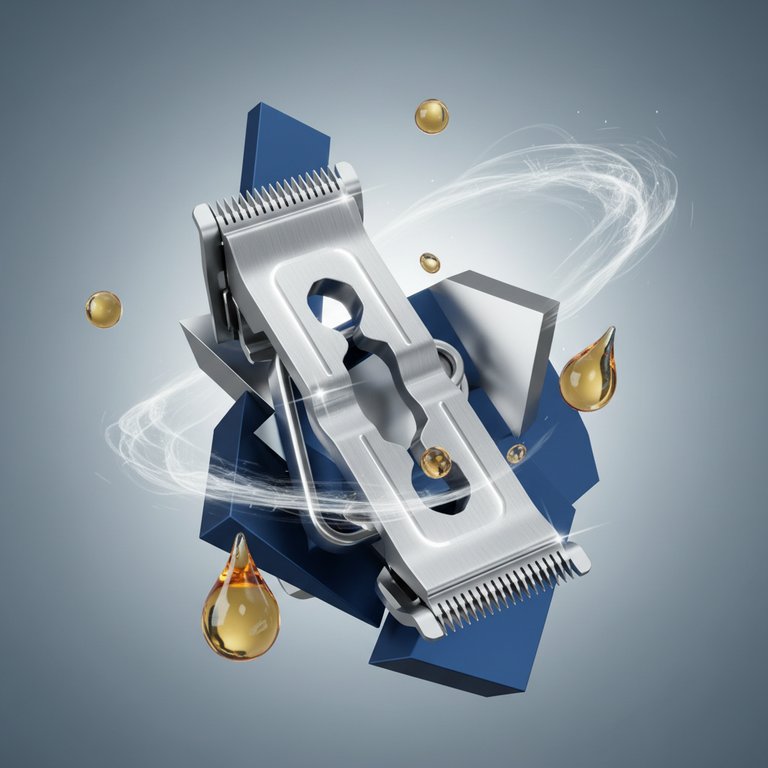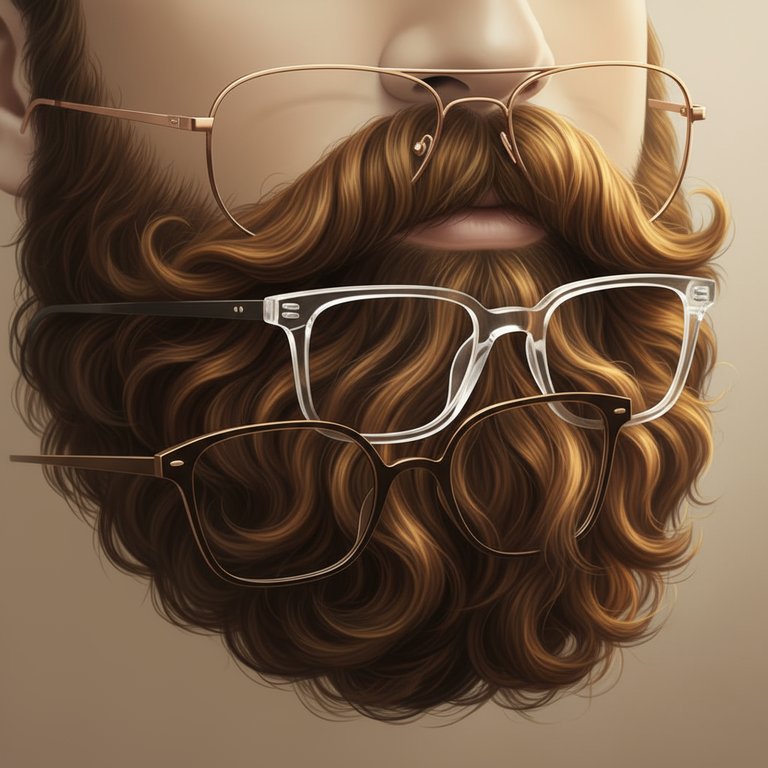Alright, fellow beard enthusiasts! Let's have a real talk about something super important that often gets overlooked: the lifespan of your trusty beard trimmer. Think about it – this little gadget is your daily or weekly partner in crime, shaping your magnificent mane and keeping you looking sharp. But just like any good relationship, it needs a little TLC to keep performing its best. Neglect it, and you'll find yourself wrestling with dull blades, snagging hairs, and a generally frustrating grooming experience. Nobody wants that, right?
Today, we're diving deep into the world of trimmer cleaning and maintenance. Consider me your beard-bro, here to share all the secrets to extending your trimmer's life, ensuring smooth cuts every time, and saving you from unnecessary replacement costs. It’s easier than you think, and your beard (and your wallet) will thank you!
Why Your Trimmer Needs Some TLC (Tender Loving Care)
You might be thinking, "It's just a trimmer, I use it, I put it away." But hold on a second! Every time you glide those blades across your facial hair, tiny clippings, skin cells, and even some natural oils get trapped within the blades and the housing. Over time, this buildup can turn your precision tool into a grumpy, inefficient hair-pulling monster.
Here's the deal: a dirty trimmer isn't just gross; it actively sabotages your grooming efforts. The motor has to work harder, the blades get dull faster, and the battery life can suffer. Plus, those dull blades? They don't cut cleanly; they tug and pull, leading to irritation and an uneven trim. I've been there – trying to rush through a trim with a neglected trimmer, and it always ends in regret. A little regular maintenance, however, keeps your trimmer humming along like new, giving you that crisp, clean line and smooth finish you deserve.
The Anatomy of Your Trimmer: What Needs Attention
Before we get our hands dirty (or rather, clean!), it’s good to know the main parts of your trimmer that require attention. Generally, we're talking about:
- The Blades: These are the stars of the show! They do all the cutting, and they're where most of the hair clippings and gunk accumulate.
- The Blade Housing: The area directly behind and around the blades, which also collects debris.
- The Main Body/Housing: This is the handle part, where the motor and battery reside. It can get dusty or accumulate oils from your hands.
- Attachments/Combs: Those plastic guards you use for different lengths? They get hairy too!
Understanding these parts helps you focus your cleaning efforts where they're most needed, ensuring you don't miss any crucial spots.
Your Step-by-Step Guide to a Squeaky-Clean Trimmer
Ready to give your trimmer the spa treatment it deserves? Grab your trimmer, a small brush (usually comes with the trimmer), some lubricating oil, and a soft cloth. Let's get to it!
Step 1: Power Down and Disassemble
Safety first, always! Make sure your trimmer is turned OFF and unplugged if it's corded. If it's cordless, remove it from its charging base. Most trimmers allow you to easily detach the blade head from the main body. Refer to your trimmer's manual if you're unsure how to do this. Removing the blade head makes it much easier to clean thoroughly.
Step 2: Brush Away the Bulk
Using the small cleaning brush that came with your trimmer (or a soft-bristled toothbrush), gently brush away all the loose hair clippings from the blades and the area immediately underneath. You'll be surprised how much accumulates here! Be thorough, getting into all the nooks and crannies. Turn the blade head over and brush from the back too, if possible.
Step 3: The Deep Clean – Blades First!
This is where the real magic happens. Depending on your trimmer, you have a couple of options:
- For "Washable" Blades (often marked as rinseable or wet/dry): If your trimmer's manual explicitly states the blades are washable, you can carefully rinse the blade head under cool running water. Make sure to only rinse the blade part, not the main body unless the entire trimmer is waterproof. Once rinsed, shake off excess water and let it air dry completely on a clean cloth.
- For Non-Washable Blades: If your trimmer isn't meant for water, you'll need a different approach. You can use a cotton swab or a corner of a soft cloth, slightly dampened with a tiny bit of rubbing alcohol (if recommended by your trimmer's instructions for cleaning, otherwise avoid), to wipe down the blades. This helps to break down any stubborn oil residue and sanitize them. Always ensure the blades are completely dry before proceeding.
Step 4: Don't Forget the Housing and Attachments
While the blades are drying (if you rinsed them), take a soft, dry cloth and wipe down the main body of the trimmer. Get rid of any dust, hair, or smudges. For the plastic comb attachments, you can usually rinse these under water and then let them air dry completely, or simply brush them clean.
Step 5: Lubrication is Key
Once everything is thoroughly clean and dry, it's time to oil those blades! This is perhaps the most crucial step for smooth operation. Place a drop or two of proper lubricating oil (the kind that came with your trimmer, or a suitable generic equivalent) on the moving parts of the blades. Turn the trimmer on for about 10-20 seconds to allow the oil to distribute evenly. This reduces friction, prevents rust, and keeps the blades cutting smoothly. Wipe off any excess oil with a clean cloth.
Step 6: Reassemble and Store Properly
Carefully reattach the blade head to the trimmer body. Now that it's sparkling clean and well-oiled, your trimmer is ready for its next grooming mission! Store it in a clean, dry place, ideally in its original case or a dedicated pouch, away from dust and humidity. This prevents dust buildup and protects it from accidental bumps.
Pro Tips for Long-Lasting Trimmer Performance
Beyond the regular cleaning, here are a few extra nuggets of wisdom to keep your trimmer in peak condition:
Regularity is Your Best Friend
Don't wait until your trimmer is struggling to clean it. Aim for a quick brush-down after every use, and a more thorough deep clean and oiling at least once a month, or more often if you're a daily shaver or have a particularly thick beard. Consistency makes a huge difference!
Invest in Good Oil
The tiny bottle of oil that comes with your trimmer might eventually run out. When it does, make sure to replace it with a high-quality lubricating oil specifically designed for grooming tools. Don't be tempted to use cooking oils or general household lubricants, as they can gum up the blades or even damage your trimmer.
Handle with Care
Your trimmer is a precision instrument, not a hammer! Avoid dropping it, as this can misalign the blades or damage the internal components. When traveling, use a protective case to keep it safe.
Battery Best Practices
For cordless trimmers, try not to constantly leave them on the charger after they're fully charged, as this can sometimes degrade the battery over time. It's often better to let the battery drain significantly before recharging it fully. Check your trimmer's manual for specific battery care instructions.
Know When to Replace Blades
Even with the best cleaning and oiling, blades will eventually dull. If you notice your trimmer pulling hairs more often, struggling to cut, or leaving an uneven finish even after a thorough cleaning, it might be time for a fresh set of blades. Replacing blades is often much cheaper than buying a whole new trimmer!
Your Trimmer Questions, Answered!
Got more questions buzzing around your head about trimmer care? Let's tackle some common ones!
How often should I clean my beard trimmer?
For optimal performance, you should give your trimmer a quick brush-down to remove loose hairs after every single use. A more thorough deep clean, including disassembling and oiling the blades, is recommended at least once a month. If you have a very dense or long beard, or use your trimmer daily, you might want to deep clean every two weeks.
Can I use rubbing alcohol to clean my trimmer blades?
You can often use a small amount of rubbing alcohol on a cotton swab or cloth to wipe down non-washable blades for sanitization and to cut through oil residue. However, always check your trimmer's manual first. Some manufacturers might advise against it, or only recommend it for specific parts. Make sure the blades are completely dry before reassembling and oiling.
What kind of oil should I use for my trimmer blades?
Always use a lubricating oil specifically designed for electric clippers and trimmers. These oils are typically mineral-based, non-toxic, and formulated to reduce friction and prevent rust without gumming up the delicate mechanisms. The small bottle that came with your trimmer is usually perfect. Avoid using general household oils, olive oil, or motor oils, as they can damage your trimmer or become sticky.
Why does my trimmer feel like it's pulling hairs instead of cutting?
This is a classic sign of dull blades or a dirty trimmer! When hair and debris build up between the blades, they can't move freely, causing them to snag and pull. Lack of lubrication also increases friction, making the blades less effective. Try a thorough cleaning and oiling first. If the problem persists, it's likely time to replace the blades.
What happens if I don't oil my trimmer blades?
If you don't oil your trimmer blades, several things can happen. Increased friction will cause the blades to heat up, wear down faster, and become dull more quickly. The motor will have to work harder, potentially shortening its lifespan and draining the battery faster. Plus, you'll experience more pulling and tugging, leading to an uncomfortable trim and an uneven finish. Basically, it's a recipe for a bad beard day!
Can I wash my trimmer under running water if it's not explicitly waterproof?
Absolutely NOT! Unless your trimmer's manual explicitly states it's fully waterproof or designed for wet use (often indicated by "wet/dry" or a shower icon), you should never submerge it or rinse the main body under running water. Doing so can cause serious damage to the motor, electronics, and battery, rendering your trimmer useless. Stick to brushing and wiping for non-waterproof models.
How do I know when it's time to replace my trimmer blades?
Beyond the obvious signs like pulling hairs or an uneven cut, listen to your trimmer. If it sounds like it's struggling more than usual, or if the blades just don't feel as sharp as they once did, even after cleaning and oiling, it's probably time. Visually inspect the blades too; if they look worn, chipped, or have any visible damage, it's definitely time for a fresh set.
Conclusion
There you have it, folks! Cleaning and maintaining your beard trimmer isn't a chore; it's an investment in your grooming routine and the longevity of your tools. By dedicating a few minutes to proper care, you'll ensure your trimmer stays sharp, efficient, and ready to tackle any beard style you throw its way. A well-maintained trimmer means a happier beard and a smoother, more enjoyable grooming experience.
So, go on, give your trimmer some love! You'll be amazed at the difference it makes. Keep those beards looking magnificent!
Disclaimer: This content is for informational purposes only and is not intended to be a substitute for professional advice. Always refer to your specific grooming tool's manual for detailed cleaning and maintenance instructions.



